INTRODUCTION

This may strike some of you as a bit odd but the first thing i do whenever i go to a hotel, restaurant or cafeteria I’ve never been in the past i always check to see if they have WiFi available and if so what is its strength and range. To my surprise most places feature mediocre WiFi signal strength at best with average overall range so in most cases it's not easy to get access especially if there are many people already logged on. This of course is not a problem we encounter at home or at the office but that doesn't mean people are not always looking for ways to improve both signal strength and range. Lately many manufacturers have focused in bringing consumers the latest 802.11ac standard which they many times marry with the older 802.11n standard to boost available wireless signal strength and in some cases even range. However it was no other than Netgear that first took things a step further with the revolutionary Nighthawk X6 R8000 router which is here with us today.
NETGEAR (NASDAQGM: NTGR) is a global networking company that delivers innovative products to consumers, businesses and service providers. For consumers, the company makes high performance, dependable and easy to use home networking, storage and digital media products to connect people with the Internet and their content and devices. For businesses, NETGEAR provides networking, storage and security solutions without the cost and complexity of big IT. The company also supplies top service providers with retail-proven, mobile broadband solutions for their customers on the go. NETGEAR products are built on a variety of proven technologies such as wireless, Ethernet and Powerline, with a focus on reliability and ease-of-use. NETGEAR products are sold in approximately 44,000 retail locations around the globe, and through approximately 37,000 value-added resellers. The company's headquarters are in San Jose, Calif., with additional offices in over 25 countries. NETGEAR is an ENERGY STAR® partner.
As made clear by the model name the main difference between the NightHawk R7000 which we reviewed a while back and the NightHawk X6 R8000 are the 6 high-gain Antennas which effectively allowed the R8000 to be the first tri-band router to ever hit the market. The R8000 manages that by broadcasting the regular 2.4GHz band on one channel (via 256QAM modulation) and two 5GHz bands on two separate channels adding up to a total bandwidth output of 3200Mbps (600Mbps on the 2.4GHz band and 2x1300Mbps on the 5GHz bands). However for the above to happen Netgear needed something powerful under the hood of the NightHawk X6 R8000 and for that they used Broadcom's 5G WiFi XStream five-core system which supports Beamforming technology and allows the broadcast of up to six 802.11ac and three 802.11n streams simultaneously. Other specifications include a dual-core 1GHz processor, 256MB of DRAM, 128MB of flash memory, three offload processors, 4 Gigabit Ethernet RJ-45 ports, WAN port, USB 2.0 port and a USB 3.0 port.
SPECIFICATIONS AND FEATURES


PACKAGING AND CONTENTS
A large product image is placed at the front of the box along with the manufacturer logo, model name and Tri-Band feature.
The package contents and specifications of the R8000 are listed on the left side along with two pictures pointing to some of its features.
The security features and system requirements are placed on the other side right above a list showcasing the genie app.
You can find a detailed features list at the rear printed in 5 languages.
Both the router and its bundle are placed inside a formed piece of cardboard.
In the box Netgear has placed the NightHawk X6 R8000 router, power adapter with two power cords (EU/UK), Ethernet cable, quick start guide, software CD, smart connected home leaflet, warranty information paper and finally a paper encouraging the end user to check for new firmware updates.
THE NIGHTHAWK X6 R8000
The plastic enclosure of the NightHawk X6 R8000 weighs 1.1kg and measures 295.5mm in width, 226,8 in depth and 54.5mm in height.
Just like the R7000 the R8000 is quite think and does resemble a stealth fighter or ship.
Netgear has placed a total of 13 activity LEDs at the top along with 2 buttons from which you can enable/disable WiFi and enable/disable WPS.
Unlike most other routers in the market that come with separate Antennas the 6 high gain ones the R8000 has are hardwired into the chassis and extend as seen above.
You can change their orientation even further but that's more of a design thing and doesn't change anything.
Moving at the rear we find an USB 2.0 port, on/off LED switch, 4 Gigabit Ethernet RJ-45 ports, WAN port, USB 3.0 port, reset button, DC in and the on/off switch.
You can mount the NightHawk X6 R8000 onto a wall since at the base it has 2 such holes (aside the 4 rubber feet).
WEB INTERFACE PART 1
As soon as you plug your computer into the router and launch an Internet Explorer (or Mozilla or Chrome) window the page will redirect to the startup page of the router which will inform you of whether or not everything is functioning properly.
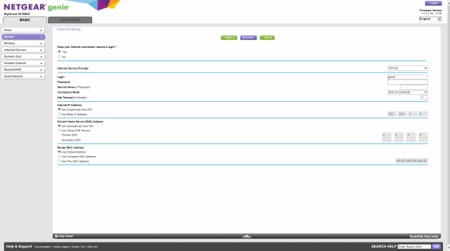
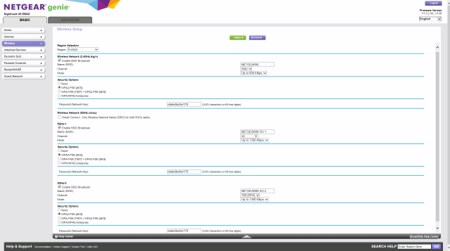
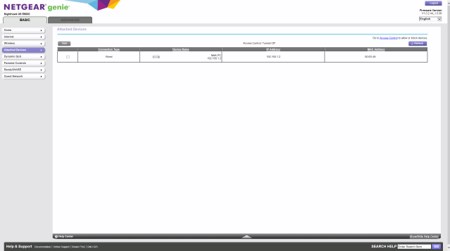
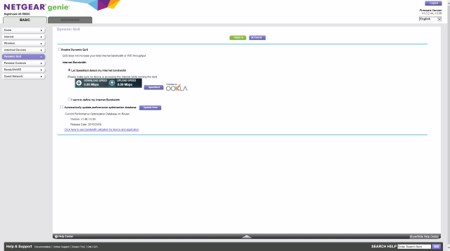
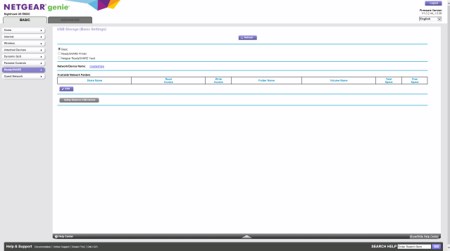
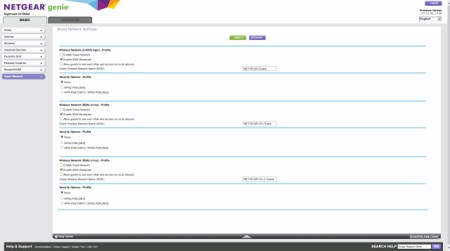
The web interface is identical to that of the D6300 and the R7000 before that so once again we see two available tabs basic and advanced. From within the basic tab you can adjust the internet connection settings, wireless settings for both the 2.4GHz and the two 5GHz bands, check for attached devices, setup the dynamic QoS service, adjust parental controls, share content from a connected storage device and finally you can create a WiFi guest network.
WEB INTERFACE PART 2
The advanced tab of the R8000 gives you access to the same settings as the basic tab but also to much more.

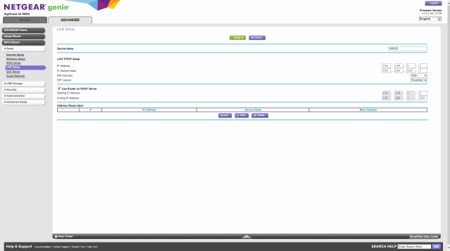
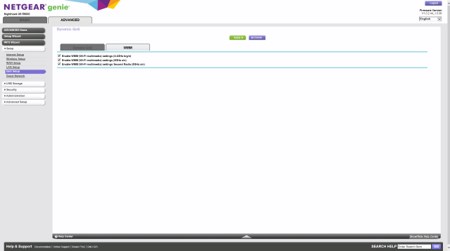

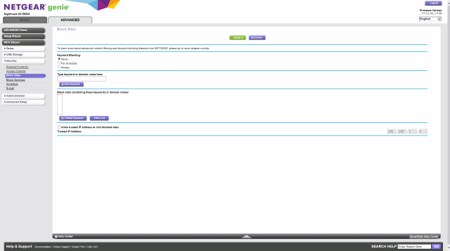


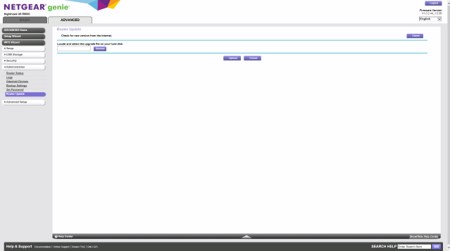
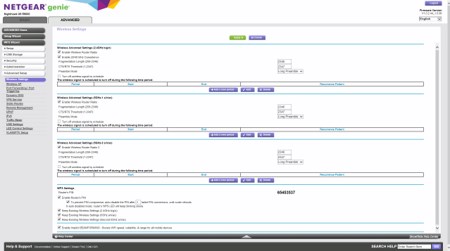
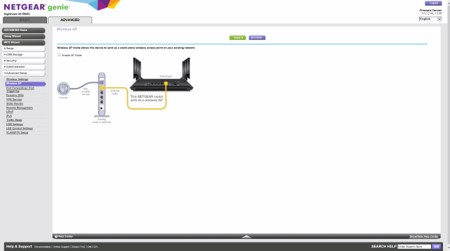
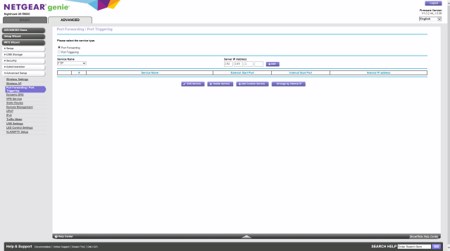

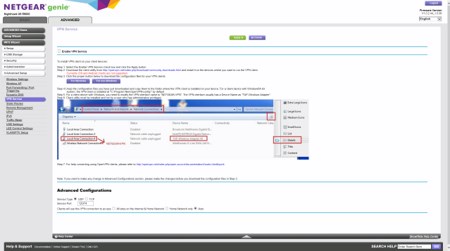
So through here you can adjust the WAN options (DMZ, protections, MTU size), reserve IP addresses for connected devices, adjust QOS for both bands, setup FTP/FTPS/HTTP/HTTP access to the storage device connected, setup DLNA media server, block specific IP addresses and sites on specific dates, backup your settings, perform firmware updates, setup the router as an access point , enable/disable dynamicDNS service, enable/disable VPN service, turn remote management on/off, enable VLAN/IPTV and finally it allows the end user to check the traffic meter and turn all of the LEDs of the device on/off.
TESTING METHODOLOGY
Since standalone routers can't directly connect to the internet (unless you have a cable connection which we don't) and thus the modem is responsible for internet speeds the only thing that's left is to test and see how much bandwidth they can offer by directly linking two devices with them. So once again we will be using the networking benchmark by Passmark (v.8), the QCheck by Ixia and ATTO 2.47 (since April 2015) to test such devices the same exact way we test Powerline adapters and Modem/Routers. Since we need to test new features and specifications all routers are benchmarked with their highest available wireless standard/band (5GHz in this case). Our systems are placed 15m away from the router with 3 concrete walls between them while each test is repeated a total of 6 times after which the average scores are recorded into our charts. Both systems have Windows 7 Ultimate SP1 installed with all the updates until the 3rd of July 2015.
TEST RESULTS
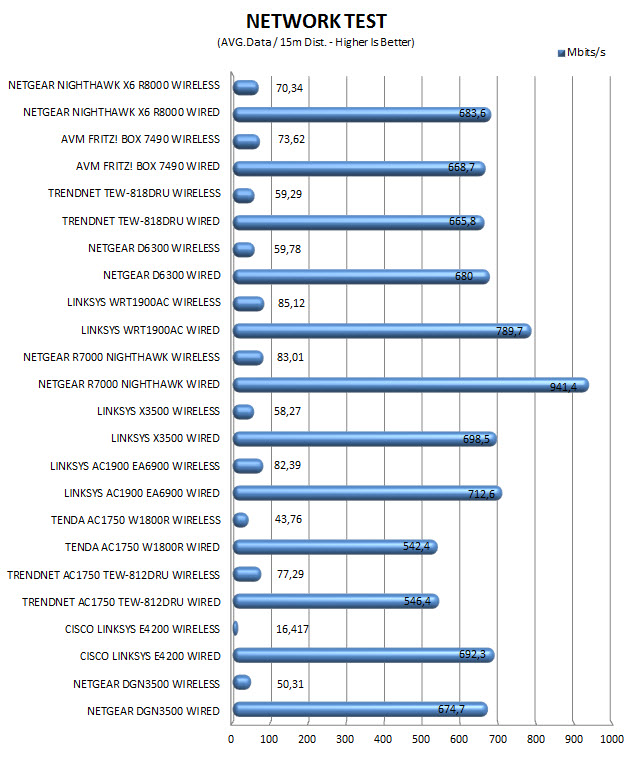
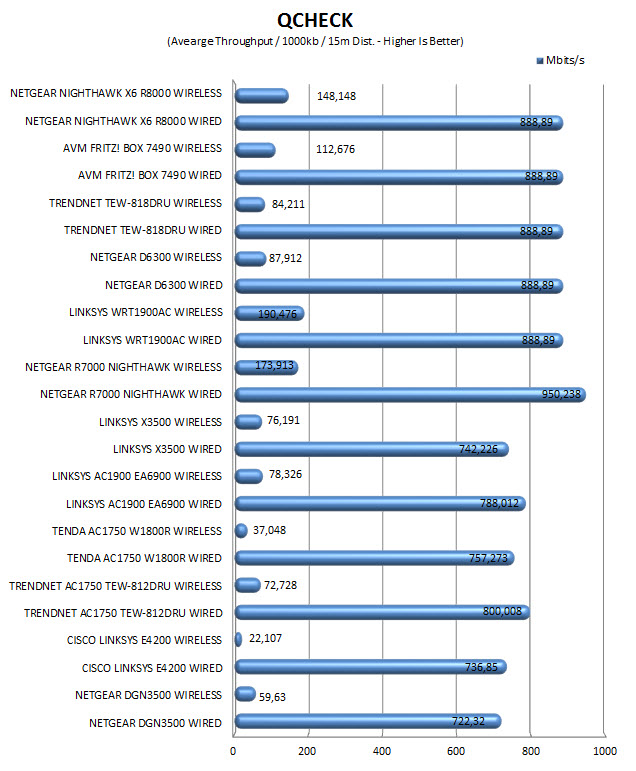
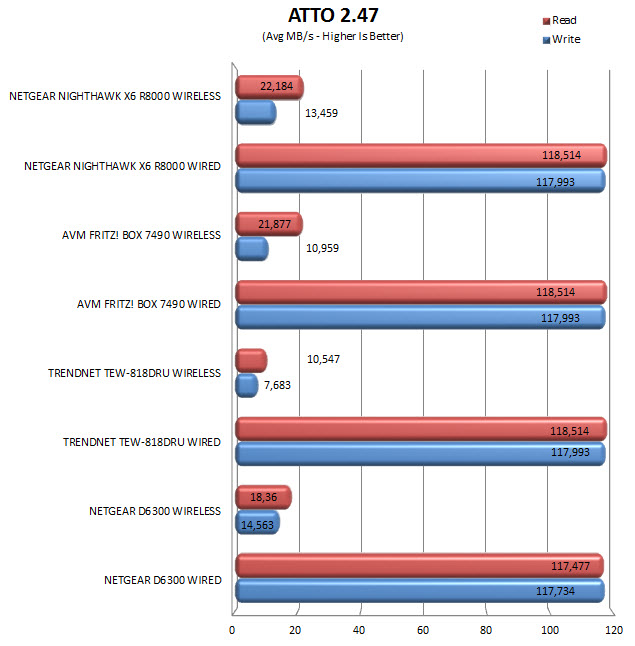
CONCLUSION

When Netgear announced the availability of the Nighthawk X6 R8000 I was intrigued since it was the first Tri-Band AC3200 compatible WiFi router in the market and having reviewed the excellent Nighthawk R7000 made things even more interesting. Specs-wise the R8000 lands not far away from where the R7000 did but although it’s more advanced judging by the time we spend testing it and of course our results it seems that we were wrong to think that Netgear wanted to replace the 2nd with the 1st. You see the R7000 is a faster model in general compared to the R8000 but it only has two radio bands. This is where the R8000 comes in since its two 5GHz bands may not be just as powerful as the one 5GHz band of the R7000 but they allow for more simultaneous connections with almost double the total bandwidth. The high-gain Antennas of the R7000 also feel quite sturdier compared to those of the R8000 but I can’t say that we came across any problems while testing (still I was expecting slightly more). As for the Gennie web interface well the R8000 offers quite a bit more compared to the R7000 but even that offered much more than we could ever hope to use.
AC1900 routers are not very cheap so it’s safe to assume that one of the very few available AC3200 compatible routers in the market will cost quite a bit more. Well the Nighthawk X6 R8000 does and so it currently retails for USD285.50 inside the USA (Amazon.com) and for 268Euros inside the EU (Amazon.co.uk) a price tag which lands it right between similar solutions by ASUS and D-Link. Of course we can’t comment on the equivalent models by ASUS and D-Link (at least not now) but since they too will feature similar hardware components results should be very similar. In the end if you want the fastest router around then you’d be better off either with the Nighthawk R7000 again by Netgear or the WRT1900AC by Linksys. If however you’re looking for a router with 3 separate bands that can allow for more connections and thus better total signal strength with a very good range then the Nighthawk X6 R8000 AC3200 Tri-Band WiFi Router should be on top of your to buy list which is why it gets our Platinum Award.
 PROS
PROS
- Overall Build Quality
- Design
- Near-Excellent Wireless Performance
- AC3200 (Concurrent 802.11n & two 802.11ac Bands)
- User Friendly Web Interface
- Features
- Technologies Used (Beamforming & TurboQAM)
- Android & iOS App
- 4 Gigabit Ethernet Ports / WAN Port
- 2 USB Ports (USB 3.0 & USB 2.0)
- LED On/Off Switch
CONS
- Price (For Some)
- High-Gain Antenna Quality

 O-Sense
O-Sense





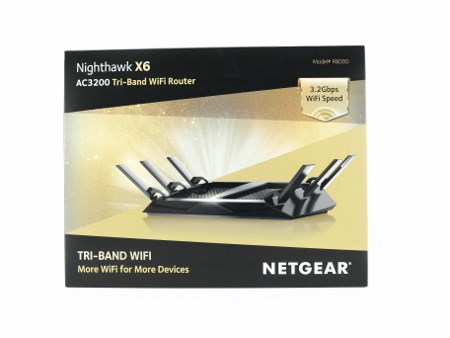
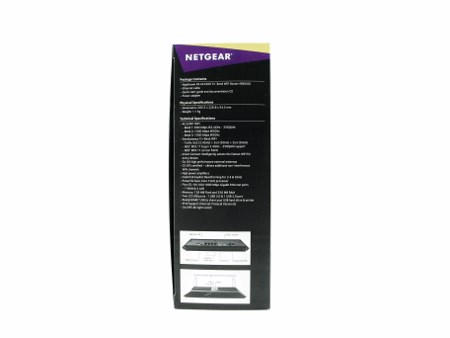
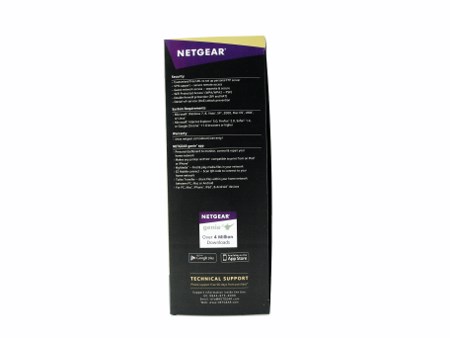
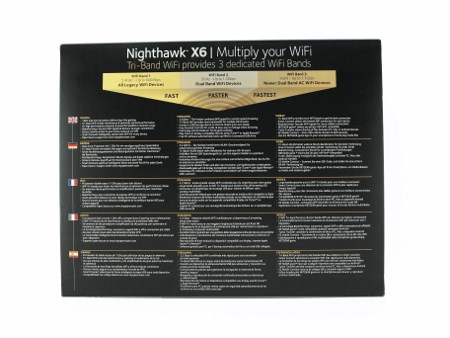

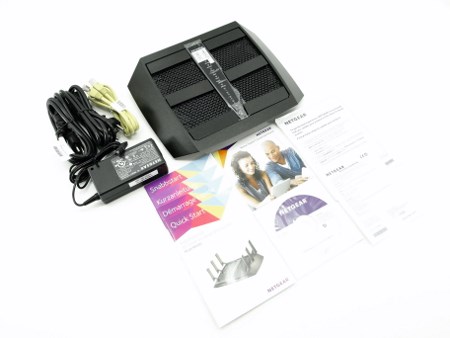
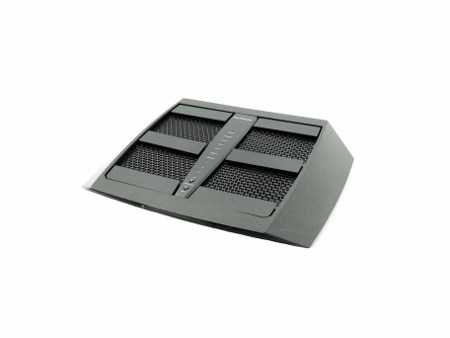
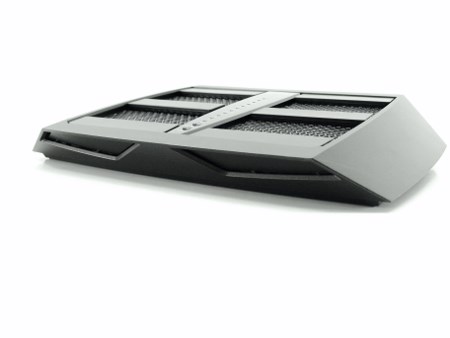
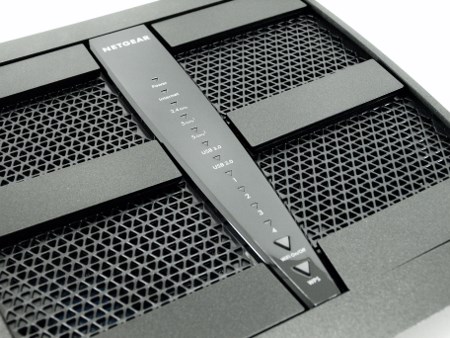
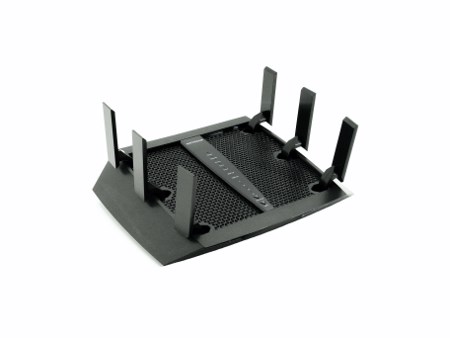
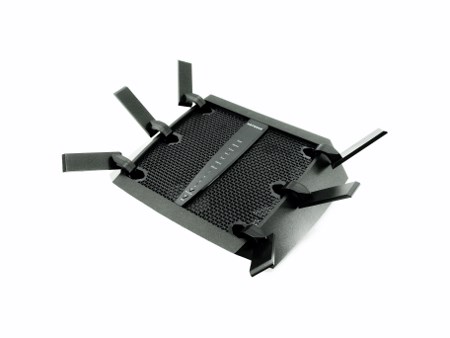
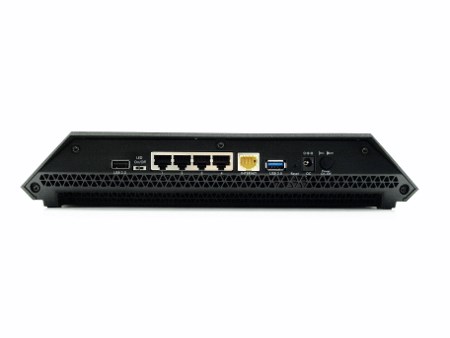
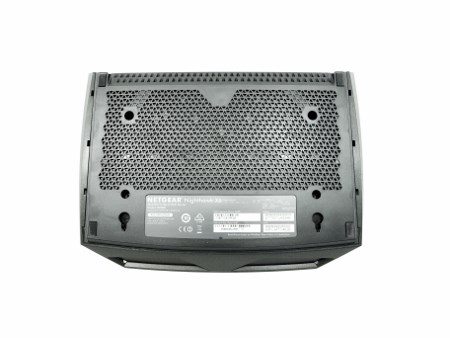
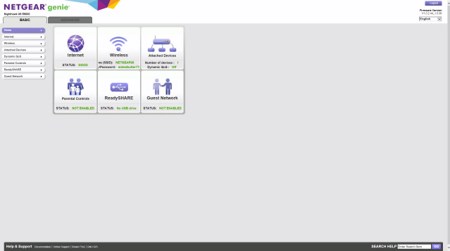
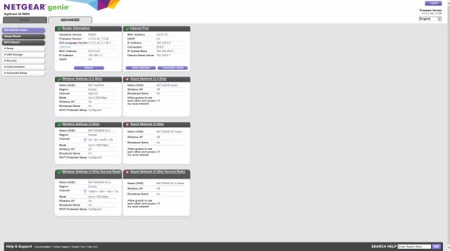


.png)

